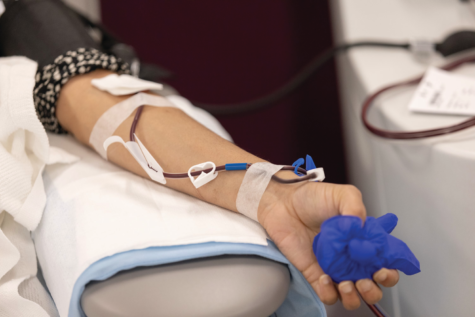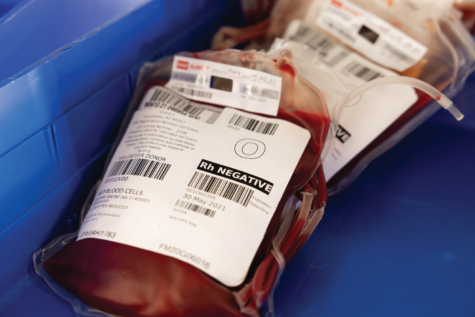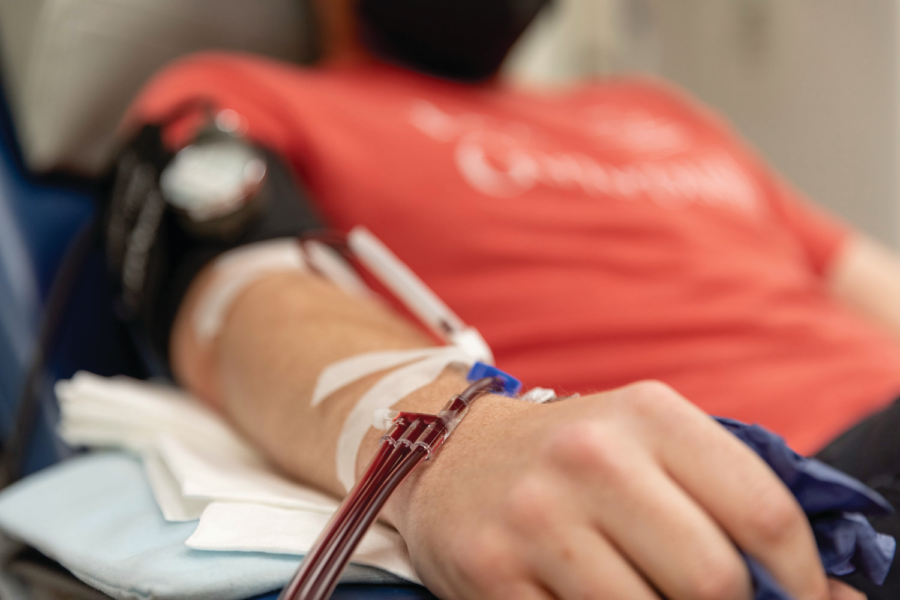I Vant To Sac Your Blad
A blood donor (Vitalant Media Database)
Blood shortages have been an issue in recent years due to the dwindling amount of blood donors. Donation clinics like Vitalant and The American Red Cross find themselves with less blood to provide to hospitals and first responders for the treatment of patients in emergencies and life-saving operations.
“It’s been extraordinarily difficult each day considering the low supply we have, but at the end of the day, we make sure it happens; that every patient gets what they need,” Kevin Adler, the Communications Manager at Vitalant, said. “There are times we can’t deliver to a hospital’s specific request for extra blood but it’s always ensured that they have enough in their supply.”
One of the main contributors to the shortages is the lack of willing and eligible donors.
“Many of the regular donors are older and are sort of aging out of eligibility. That’s why it’s so important to get young people to start donating and maybe become life-long donors,” Adler said. “Blood is perishable, and there’s a constant need. People need blood every day for procedures and it kinda gets taken for granted. Supply is always going out [to hospitals] faster than it’s coming in.”
Many people are able to donate and do not.
“Around 62% of Americans are eligible to donate blood and less than 5% of them do,” Adler said, citing the AABB, The Association for the Advancement of Blood and Biotherapies.
There are a couple of ways students can contribute to their community.

“The big thing is obviously that we encourage students to donate blood, the whole process takes around an hour, some can be squeamish but it’s a relatively, almost painless process,” Adler said. “If you’re not eligible, you can still provide by encouraging others to donate, spreading the word about donating, and you can help host a blood drive. There’s also a lot of responsibility and leadership that’s gained from hosting a blood drive on campus and some schools give community service hours.”
The process for donating is quick and simple,
“You go through an eligibility health screening, making sure you’re healthy and meet weight requirements. On average it takes around 10 minutes to draw your blood, and then you sit in the canteen for 15 minutes eating food, and then you can go and look at yourself and say you have done something really good for your community,” Adler said.
There isn’t much that would hold one back from pitching in a pint, except for a few important baselines.
“You definitely have to weigh at least 110 pounds and also meet some travel requirements, [You cannot donate if] …you have been to a country that has had malaria outbreaks,” Adler said. “[A common] misconception is that if you have gotten a tattoo you can’t donate. If you received a tattoo from a licensed artist in any state you can still donate.”
There can be a lot of fear built up around the idea of having a needle in your arm for first-time donors, but the bark is worse than the bite.

“First-time donors often wonder if it hurts, I like to tell them it’s a lot less painful than they think it’s going to be. There is going to be a pinch at first but we have highly trained, highly skilled phlebotomists,” Adler said.
“Another common question I get from first-time donors is ‘how will I feel after donating?’ The vast majority feel just fine after you donate. Most will feel nothing. We ask that you refrain from strenuous activity for 24 hours, including lifting heavy items or exercising,” Adler said.
“When you donate whole blood, you donate a pint, roughly the size of a 16-ounce water bottle. This pint contains red blood cells, which carry oxygen, so some may feel a bit tired.”
A donor can expect their donation to have an immediate and meaningful effect on someone’s life.
“…It could be given to a cancer patient, a mother that had difficulty in childbirth, or people who need transfusions for blood diseases such as sickle cell anemia,” Adler said.
It’s important that people are willing to go out and donate of their own accord, and as often as they can.

“We try to host as many [blood drives] as we can, but obviously, we can’t do as many as we would like to. We usually do drives at different schools twice a year because people who are eligible can give whole-blood donations around every 56 days,” Adler said. “To find a way to donate near you, all you have to do is go to vitalant.org and search your zip code, pick a date, and time, and set an appointment.”
Here are some informative links that will help those wanting to contribute:
Blood Donation Process – Vitalant / American Red Cross
Hosting a Blood Drive – Vitalant / American Red Cross
Impact of a Donation – Vitalant / American Red Cross

Dixon Smith is a Senior at AGHS. He enjoys learning Latin languages, crispy breaded chicken, and popping scavs in Tarkov, his most recent game addiction.






